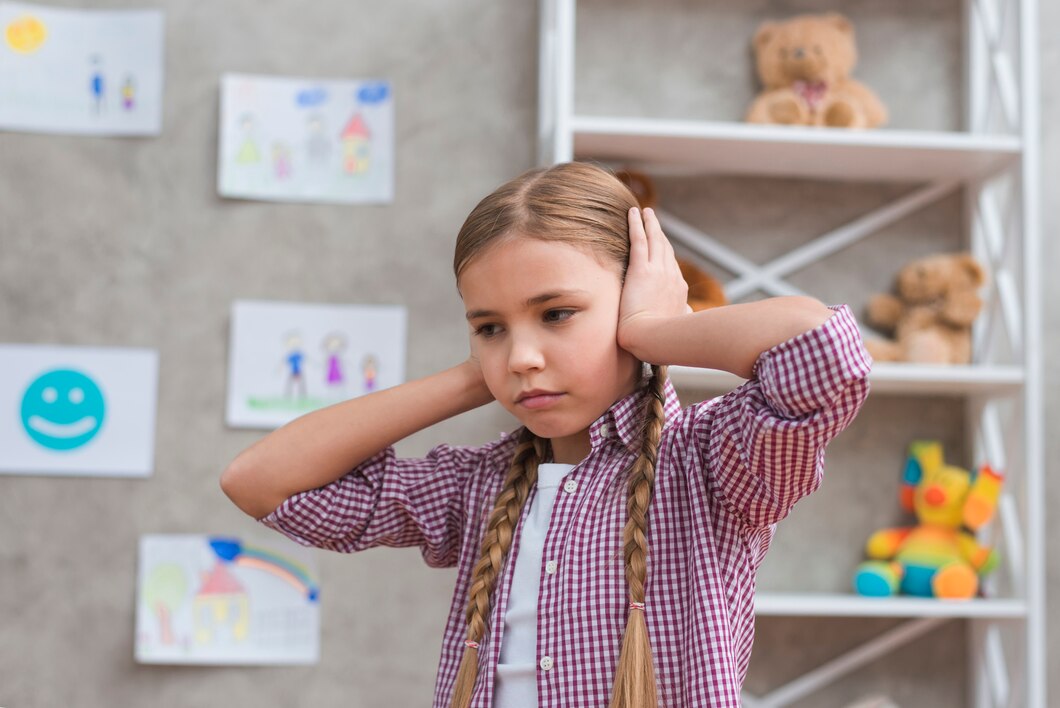The world of a child is vibrant and full of new experiences. Every touch, sound, sight, and taste is a new adventure. But for some children, this world can be overwhelming. They may struggle with stimuli that others find normal, and sometimes, this can hinder their daily activities.
The reason behind these challenges often lies in the realm of sensory processing. In this article, we’ll delve into what sensory processing issues are, how they manifest, and the role of a specialised form of intervention, child-focused occupational therapy.
What is Sensory Processing?
Sensory processing refers to the way our nervous system receives, organises, and interprets sensory information from the environment. This processing allows us to generate appropriate responses to different situations. In simple terms, it’s how our brain understands what our senses tell us.
Signs of Sensory Processing Issues
Children with sensory processing issues may exhibit various behaviours, often misinterpreted as mere tantrums or peculiar habits. Here are some signs:
- Over-sensitivity to Stimuli: Such children might find certain clothes uncomfortable, be overwhelmed by loud noises or crowded places, or might avoid playgrounds and interactive games.
- Under-sensitivity to Stimuli: On the flip side, some children seek more sensory input. They might enjoy spinning, crashing into objects, or love extremely spicy foods.
- Coordination Challenges: They might have trouble tying shoelaces, holding a pencil correctly, or frequently bump into objects.
- Difficulty Engaging in Play: Children may find it hard to play with toys in an intended manner or struggle to engage in imaginative play.
- Challenges in School: These children might find it tough to concentrate, especially in noisy environments, or could be easily distracted by the classroom’s visual stimuli.
Role of Paediatric Therapy Solutions in Addressing Sensory Processing Issues
Occupational therapy for young ones plays an invaluable role in helping children with sensory challenges. Through tailored interventions it helps children make sense of the sensory information they receive and respond adequately. Here’s how:
- Individualised Therapy Plans: Based on the specific sensory challenges a child faces, experts devise plans to address them. For instance, if a child is oversensitive to touch, they might be introduced to various textures gradually to desensitise them.
- Improving Motor Skills: Through play and structured activities, professionals can help children develop their gross and fine motor skills, allowing them to navigate their world with ease.
- Developing Coping Strategies: Beyond addressing the sensory challenges directly, therapy also helps children develop coping mechanisms. This can include deep breathing techniques, using weighted blankets, or identifying safe spaces to retreat to when overwhelmed.
- Guidance for Families: Paediatric therapists don’t just work with the child. They also guide families, offering them strategies to create a supportive environment at home.
So, if you think your child is struggling with sensory processing, seeking professional advice on paediatric occupational therapy services is a beneficial step. They can help your child navigate their sensory world with confidence.
Recent Advances in Sensory Integration Techniques
The world of sensory integration is continually evolving. With the advancement of technology and continuous research, there are always new methods and techniques being developed. For parents and caregivers keen to stay updated, diving into the latest trends in sensory integration can be a valuable resource.
Conclusion
Every child deserves to experience the world in all its beauty and complexity. Sensory processing issues can sometimes stand in the way of that, but with understanding, awareness, and the right interventions, we can help our children thrive.
Paediatric therapeutic expertise is a beacon of hope for many families, offering children the tools they need to navigate their sensory world. As our understanding of sensory integration grows, so do the possibilities for enhancing the lives of those affected.
Embracing the advances and seeking professional guidance can pave the way for a brighter, sensory-balanced future for our little ones.
